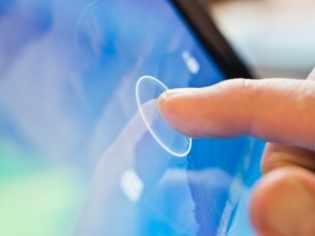-
Team TechTree
16:59 28th Mar, 2019
The Pros and Cons of Touch Screen Tech | TechTree.com
The Pros and Cons of Touch Screen Tech
When shopping for the latest gizmos and gadgets, there are all sorts of specs that guide our shopping choices: resolution; battery life; portability; and, of course, touch screen compatibility, to name just a few

Today we’re diving a bit deeper into touch screen technology, including its various pros and cons, so you can make an informed decision on your next device.
Touch Screen Technology: The Pros
· Convenience
If you have a smart TV that allows you to search for shows on streaming services such as Netflix or Hulu, you know what we’re talking about in terms of convenience. Pointing your remote at the TV and individually typing each letter by going down two rows and over three, then up four rows and left one, etc., etc. until finally “Breaking B - -” is at least spelled out enough to prompt an auto-fill suggestion, can take so long that your arm starts to go numb.
A touch screen interface on your device conveniently allows you to tap your letter or number of choice without having to use an arrow or cursor to get you there (again, and again, and again…).
· Portability
Touch screen laptops and phones are of course portable, but when it comes to touchscreen computers, we’re talking about “All-in-One” devices. That means the monitor is usually connected to the CPU in one complete unit, versus those old school desktop towers with normal screens. Although not as portable as a phone or laptop, All-in-One PCs are way more portable than their dual-component counterparts.
· Functionality
The best touch screen laptop will boast tons of functionality. That means to can convert it from a standard L-shaped laptop to a tent or tablet configuration. Why? On a tent display, you can show off slideshow presentations with a swish of a finger or, when shaped like a tablet notebook, use your stylus to doodle, illustrate, or simply take handwritten notes. The possibilities are as big as your creativity!
· Availability
With the development of technology and the nearly ubiquitous acceptance of touch screens, you can find this technology standard pretty much everywhere. In fact, it’ll probably be harder for you to find a cell phone that’s not touch screen if you ask the person to your left and right what they’re carrying.
Touch Screen Technology: The Cons

· Lack of Necessity
Let’s circle back to that aforementioned smart TV. It probably doesn’t need touch screen capability; for example, are you really going to stand up every time you want to press pause? No, the remote will probably suffice. If you do want to use a full keyboard, there are plenty of extension accessories you can buy (often which cost much less than the touch screen tech would).
· Fragility
Yes, these items are portable but they’re also super fragile. At least a tiny part of you misses playing Snake for days on the old, indestructible Nokia 3310. Those things could withstand anything accident thrown it’s way, but it’s almost like these new, ultra-thin touch screens are designed to break… and one little crack can immobilize the entire display, forcing us consumers to sign up for yet another $600-1,000 model (Pro tip: Always buy the insurance plan!)
· Input Lag
A stylus can look cool and all, but have you ever tried to actually use one? How about signing your name with your fingertip on a touch screen device? “Buttery smooth” is not the adjective I’d use to describe the experience. The resulting signature is more like “3rd grade Picasso”, if you ask me.
· Affordability
As noted, touch screens are pretty much everywhere these days... but that’s not necessarily a good thing. Like we said, high-tech touch screens are typically more expensive than their analog counterparts, so consumers would probably appreciate having more entry-level options available to them—especially considering they’re more durable and could last way longer, all for a fraction of the price.
The Takeaway
Obviously, the pros of touch screen technology are plentiful. Not only are they convenient and efficient, but they also tend to be way sleeker with better resolution and crisper images. Nonetheless, there’s still something to be said for a good old-fashioned button. They’re cheaper and harder to break—but all that repetitive pressing may very well lead to carpal tunnel down the road.
It all comes down to what you need out of a device, how you’ll use it, and which features fit your lifestyle. At the end of the day, only you can know what’s right for you!
TAGS: Touch Screen
- DRIFE Begins Operations in Namma Bengaluru
- Sevenaire launches ‘NEPTUNE’ – 24W Portable Speaker with RGB LED Lights
- Inbase launches ‘Urban Q1 Pro’ TWS Earbuds with Smart Touch control in India
- Airtel announces Rs 6000 cashback on purchase of smartphones from leading brands
- 78% of Indians are saving to spend during the festive season and 72% will splurge on gadgets & electronics
- 5 Tips For Buying A TV This Festive Season
- Facebook launches its largest creator education program in India
- 5 educational tech toys for young and aspiring engineers
- Mid-range smartphones emerge as customer favourites this festive season, reveals Amazon survey
- COLORFUL Launches Onebot M24A1 AIO PC for Professionals







TECHTREE